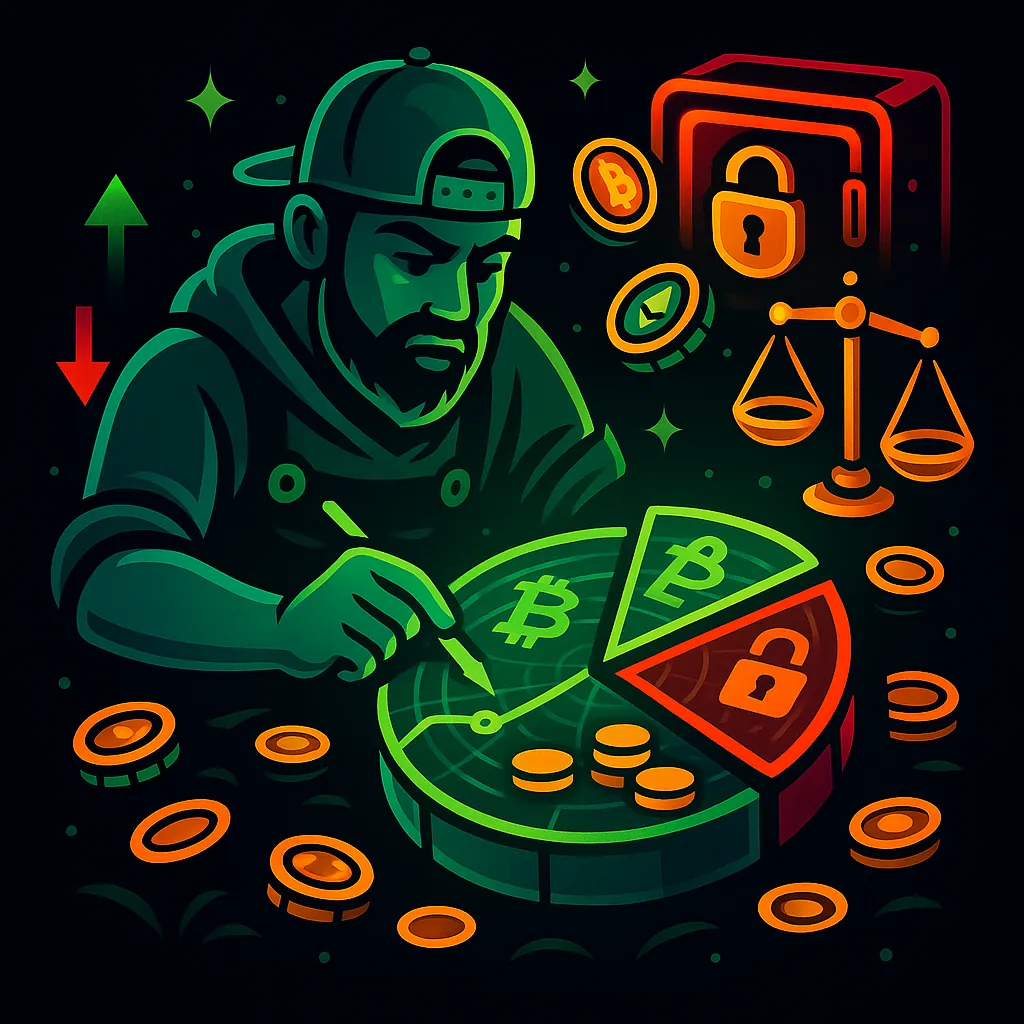In crypto, the charts tell you where a coin is today. Tokenomics tells you where it’s going tomorrow. If you don’t understand the supply, distribution, and incentives behind a token, you’re just gambling blind. Rug pulls, endless dumps, or unsustainable “APY farms” all come down to bad tokenomics. Let’s break down what tokenomics actually means, what to look for, and how degens can avoid being exit liquidity.
What Is Tokenomics?
Tokenomics = token + economics. It’s the set of rules that define how a token is created, distributed, and used within its ecosystem. Think of it as the project’s financial blueprint.
Good tokenomics create sustainable value. Bad tokenomics? They create hype pumps that die in months.
The Key Elements of Tokenomics
1. Total Supply vs Circulating Supply
- Total supply = maximum tokens that will ever exist.
- Circulating supply = tokens currently on the market.
A coin with 1B tokens but only 50M in circulation can look cheap at $1 (“only $1 per coin!”), but the hidden supply will eventually flood the market.
2. Distribution
- How much do founders, VCs, and the team hold?
- How much goes to the community, liquidity pools, staking rewards?
If insiders control 70% of supply, they can dump on retail. Healthy projects balance team incentives with community ownership.
3. Emissions & Unlocks
- Many tokens release supply over time (vesting schedules).
- Example: a project might unlock 10% of team tokens every 6 months.
If you don’t track unlock schedules, you’ll get dumped on without knowing why. Tools like TokenUnlocks show this data.
4. Utility
- What does the token actually do?
- Is it needed for gas fees (like ETH), staking (like SOL), governance (like UNI), or payments (like USDT)?
- Or is it just “number go up”?
Without real utility, tokens turn into hype coins with no staying power.
5. Burn & Deflation Mechanisms
- ETH burns part of every transaction (EIP-1559), making it deflationary during high usage.
- BNB burns supply quarterly.
- Tokens with no burn or sink risk inflation and price collapse.
6. Incentives & Rewards
- Yield farming, staking rewards, cashback — all funded by token supply.
- If rewards are too high and unsustainable, it’s basically a Ponzi. (Looking at you, Terra’s Anchor with “20% risk-free yield.”)
Real-World Examples
- Ethereum (ETH): Utility token used for gas fees, staking, and DeFi. Burn mechanism keeps supply balanced. Result: long-term growth and adoption.
- Binance Coin (BNB): Utility for exchange fees, burns every quarter, used in DeFi and payments. Strong tokenomics helped it stay a top coin.
- Terra (LUNA/UST): Algorithmic “stablecoin” backed by circular logic. Promised 20% APY out of thin air. Collapsed in 2022, wiping $40B. Classic case of broken tokenomics.
- Memecoins (DOGE, SHIB, PEPE): Mostly hype-driven, but SHIB built burns + staking later to add longevity.
What Degens Should Look For
- Healthy balance between team, investors, and community.
- Real utility that creates demand for the token.
- Sustainable rewards, not ponzinomics.
- Clear burn/deflation mechanisms.
- Transparent supply and unlock schedule.
Tools to Analyze Tokenomics
- CoinGecko / CoinMarketCap: check circulating vs total supply.
- TokenUnlocks: track upcoming unlocks.
- Messari: deep research reports on token models.
- On-chain explorers: see who holds the bags.
Final Thoughts: Follow the Incentives
In crypto, money always follows incentives. Tokenomics is the map. If a project’s incentives push insiders to dump, it will dump. If incentives reward builders, stakers, and long-term holders, the token has a shot at lasting.
So before you ape into a new shiny coin, ask: Who holds the supply? What gives this token value? When do big unlocks happen? If you can’t answer those, you’re not investing — you’re gambling.
Understand tokenomics, and you’ll see the game for what it is. Play blind, and you’ll always be someone else’s exit liquidity. Wagmi. 🚀


